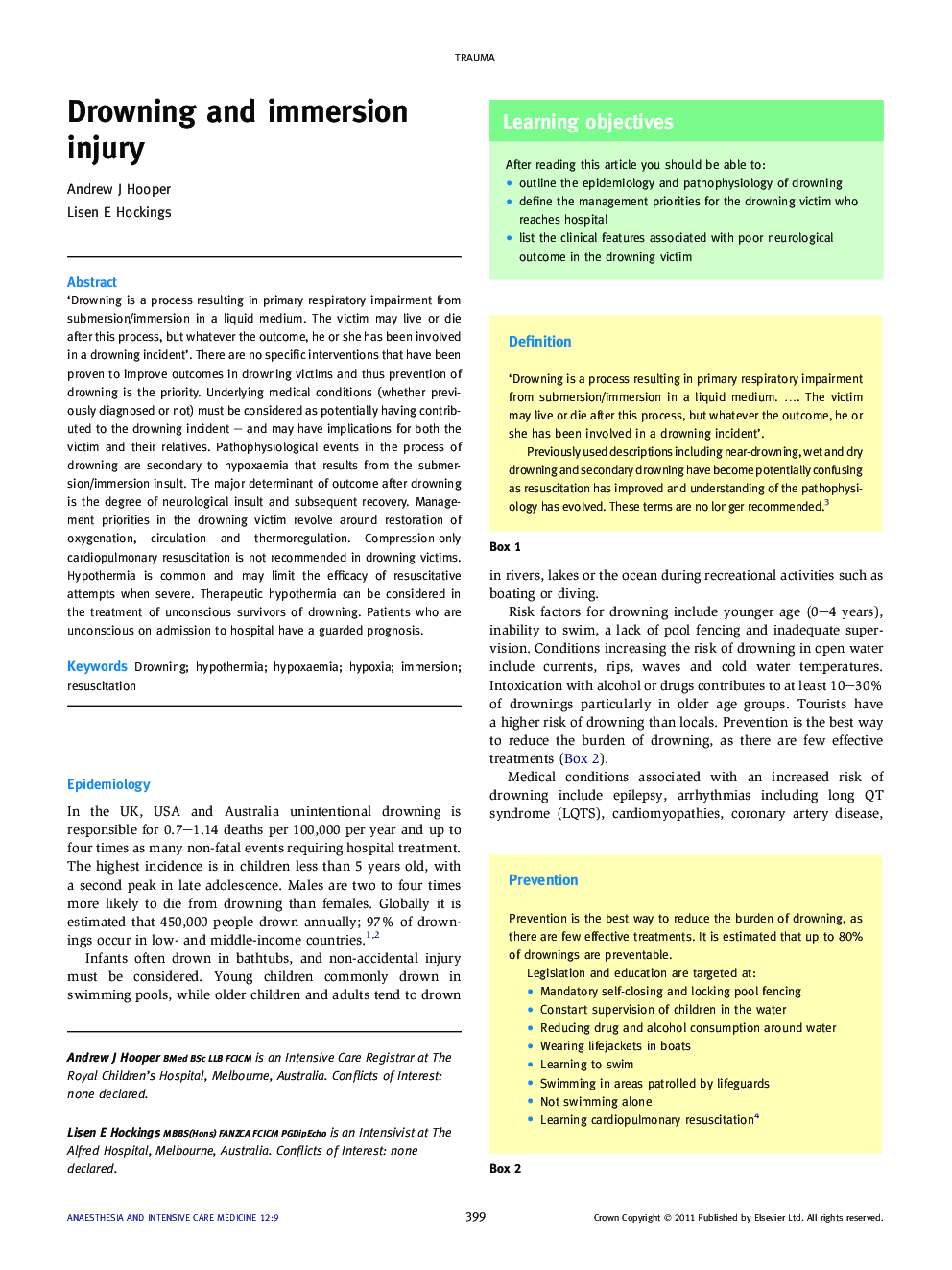| Article ID | Journal | Published Year | Pages | File Type |
|---|---|---|---|---|
| 2742588 | Anaesthesia & Intensive Care Medicine | 2011 | 4 Pages |
‘Drowning is a process resulting in primary respiratory impairment from submersion/immersion in a liquid medium. The victim may live or die after this process, but whatever the outcome, he or she has been involved in a drowning incident’. There are no specific interventions that have been proven to improve outcomes in drowning victims and thus prevention of drowning is the priority. Underlying medical conditions (whether previously diagnosed or not) must be considered as potentially having contributed to the drowning incident – and may have implications for both the victim and their relatives. Pathophysiological events in the process of drowning are secondary to hypoxaemia that results from the submersion/immersion insult. The major determinant of outcome after drowning is the degree of neurological insult and subsequent recovery. Management priorities in the drowning victim revolve around restoration of oxygenation, circulation and thermoregulation. Compression-only cardiopulmonary resuscitation is not recommended in drowning victims. Hypothermia is common and may limit the efficacy of resuscitative attempts when severe. Therapeutic hypothermia can be considered in the treatment of unconscious survivors of drowning. Patients who are unconscious on admission to hospital have a guarded prognosis.
